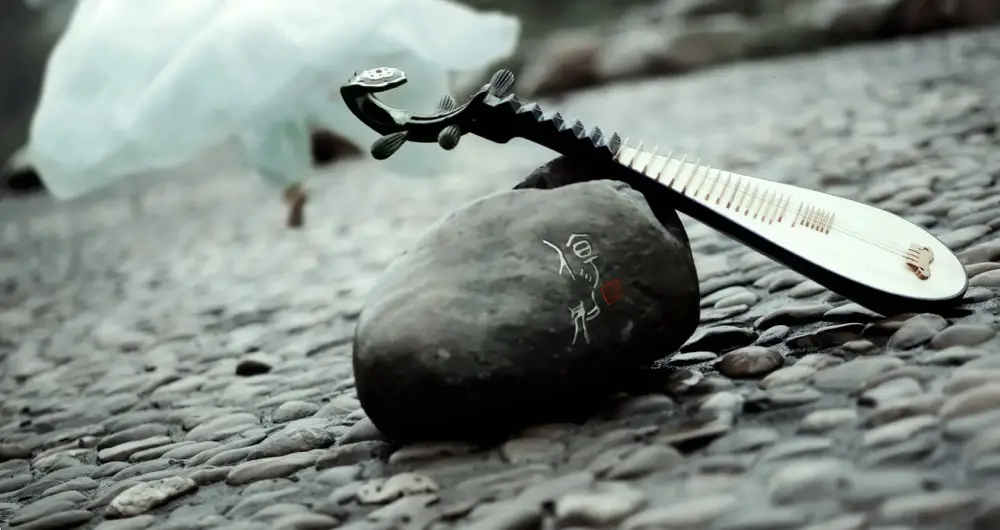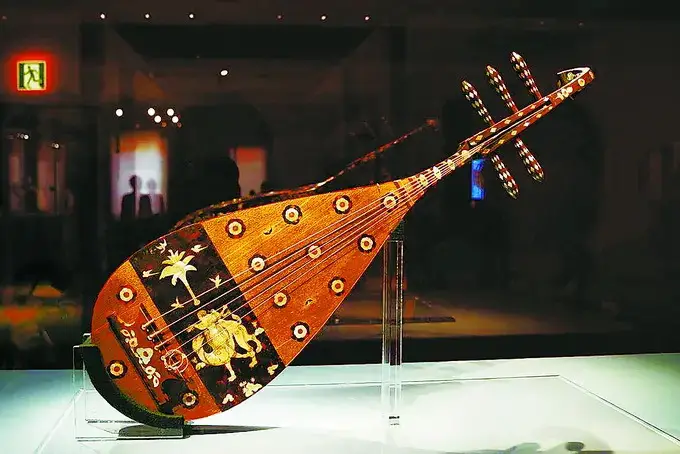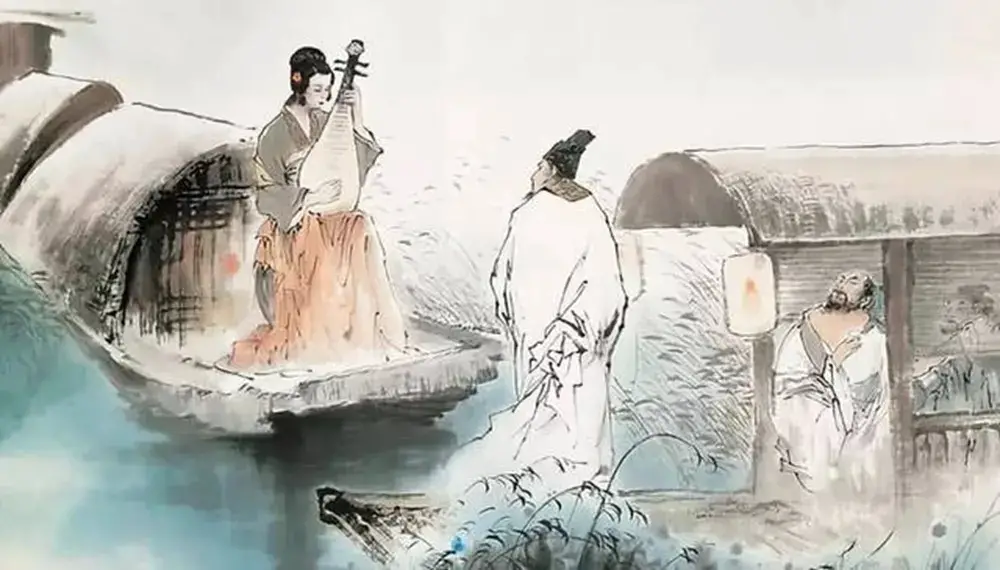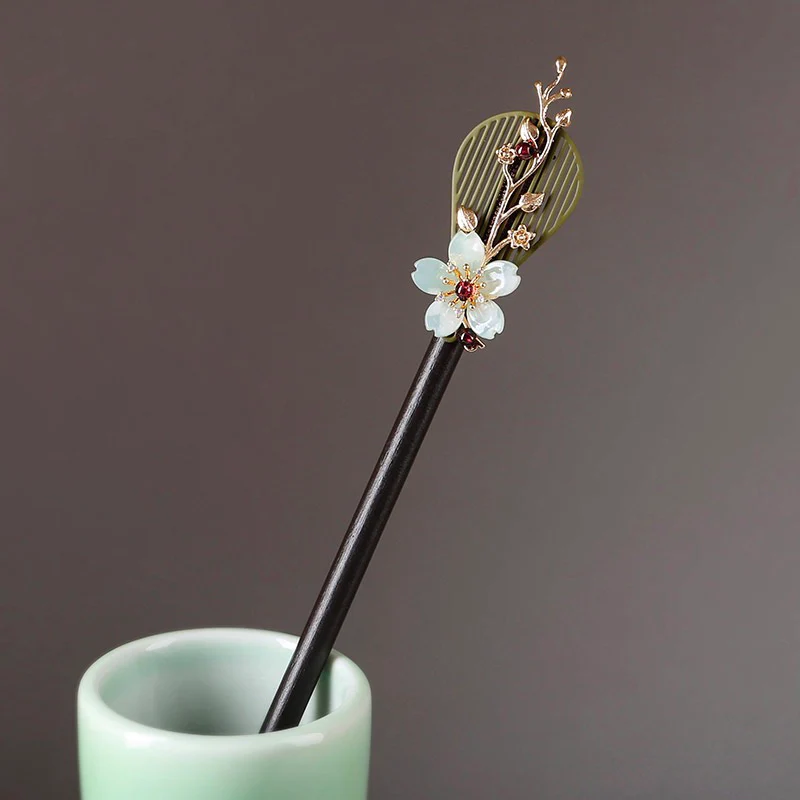Many people know the pipa as just a Chinese instrument that is played in Chinese opera orchestras. While this is true, the instrument also has a rich and beautiful history that many people don’t know about. The pipa has evolved over the years and what we see today is a more polished version of the instrument. In this article, we will expound more on the pipa by giving a brief history of it and what it is made of. You will also get a glimpse of how the instrument is played.
What is a pipa instrument?

The pipa, sometimes called the Chinese lute is a pear-shaped, traditional Chinese musical instrument that belongs to the plucked string category of instruments. It is one of the most popular Chinese instruments and has been played for almost two millenniums in China as a solo instrument or in ensemble settings. The name “Pipa” was derived from how the instrument was played, “Pi” meaning to play forward and “Pa” meaning to play backward. The name “Pipa” is also an onomatopoeic name that describes the sound produced by the strings when the strings of the instrument are plucked. The construction of the pipa was not by luck but was thoroughly thought of. All the parts of the pipa have a spiritual aspect to them. Interesting right? The pear-shaped part of the instrument, by traditional Chinese metrics measures three feet five inches. The three feet represent the three realms which are heaven, earth, and man, while the five feet represent the five elements which are fire, earth, wood, metal, and water. The pipa has four strings that represent the four seasons of the earth, that is summer, spring, winter, and autumn.
What is pipa made of?

The body or sound box of the pipa is made of light wutong wood and the back is made of teak. The frets and tuning pegs can be made from several materials such as wood, buffalo horns, or ivory. The lower frets are made of bamboo. The middle part of the head can be made with either ivory or jade. The strings of the original pipa, in ancient times, were made of silk but the strings of the contemporary pipa are made of nylon wound steel.
What type of instrument is a pipa?
The pipa is a Chinese plucked lute with four strings. The instrument has a varying number of frets ranging from 12 to 26. The four strings of the pipa are tuned to A, D, E, and A with four octaves. The head of the pipa has four tuning pegs that tune the pipa by simply turning the pegs. The contemporary Chinese lute has 30 frets arranged in chromatic order. Originally, (221- 207BC), the pipa was a long-necked instrument with a leather surface and a circular sound box. After numerous developments from the Tang dynasties, the instrument became the modern-day pipa that we know now which has a pear-shaped sound box, four strings, and four-octave intervals. The pipa was initially played with a pick made from wood, but the performers began using fingers instead since this ensured maximum agility when playing.
When was pipa invented?

Despite the pipa popularly known as a Chinese instrument, it was regionally from West and Central Asia, from a Persian about 2000 years ago through the Silk Road Trade and introduced to China. By the 2nd century AD, the pipa had become very popular in China and several varieties of the instrument began emerging. By the 8th century AD, the pipa reached Japan and its name changed to Biwa. The pipa was invented in the second century BC and appeared in the Qin dynasty, (221- 206 BC), which was eventually succeeded by the Han Dynasty.
Who invented the pipa?
The origin of the Chinese lute can be traced back to the Han dynasty but originated in ancient Persia. There was a similar instrument known as the Tao which developed into the Qin Pipa. Ruan Xian was a Chinese scholar who significantly improved the Qin Pipa and made it popular that the instrument was named after him.
How to play the pipa?
Essentially, the pipa is played a bit like the guitar or the banjo, but it is held upright on the player’s thigh. To play the pipa, you will use the five fingers on your left hand. Artificial nails, known as plectrums are taped on the fingers to produce louder and brighter tones when the instrument is played. The left hand is used to press the strings onto the frets to produce notes and chords.
Now let’s get to the nitty-gritty of playing the instrument. The pipa has more than 70 different playing techniques for both the right hand and left hand, to produce its unique sound. The most common technique is the tantiao technique (彈挑), where the player uses the index finger and the thumb to play. Other techniques include the Shuang tan, the Shuang tiao, the gun Zou, the wen Zou, the sao, (掃), and the Fu. (拂) All these are right-hand techniques. The left-hand techniques include the shi yin, the fan yin, ren gon fan yin, and the jiao Xuan. These techniques are important in producing various sounds such as harmonics, glissandos, vibrato, portamento, and pizzicato. Luckily, these aren’t the only techniques that can be used. Striking the sound box of the pipa while playing gives a drum-like sound. You can also twist the strings to produce a cymbal-like sound.
Conclusion
Despite the pipa having a beautiful sound and amazing melodies, it is important to appreciate all the interesting history that comes with it. It is also quite versatile since it can be heard in various genres of music such as jazz and rock. Therefore, if you are learning how to play the pipa or you have been intrigued thanks to this article, do not limit yourself to classical music only. Explore the many ways the instrument can be played and immerse yourself in the beautiful experience.
